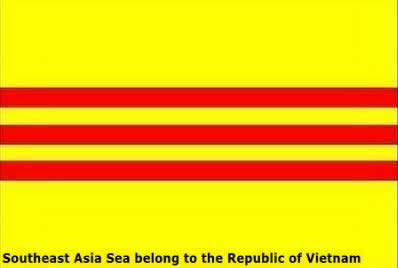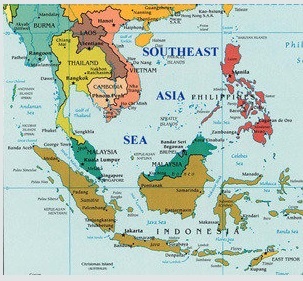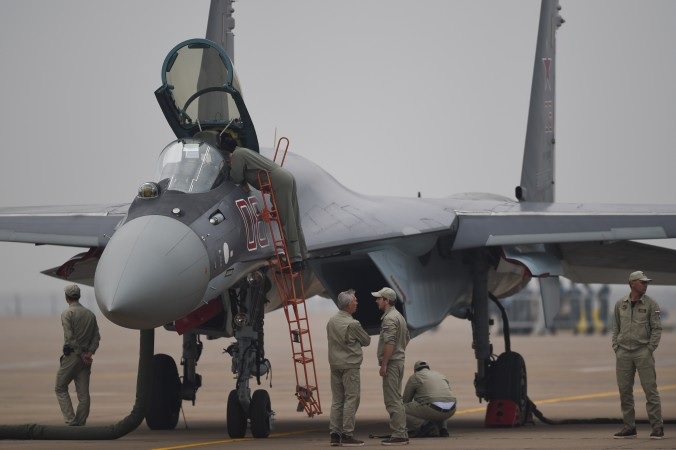Trang Chính
Blog Phạm-Hoàng-Tùng:Biển Cả Và Con Người:
Bưu-Hoa Việt-Nam:
Chết Bởi Trung Cộng:
Địa-Linh Nhân-Kiệt Của Việt-Nam:
Điện-Toán - Tin-Học:
Ebooks Hồi-Ký - Bút-Ký:
Hịch Tướng Sĩ:
Hình-Ảnh Quân-Lực Việt-Nam Cộng-Hòa
History Of Viet Nam
Hoàng-Sa Trường-Sa Là Của Việt- Nam:
Hồ-Sơ Chủ-Quyền Quốc-Gia Việt- Nam
Hội Sử-Học Việt-Nam
Vietnam Human Rights - Human Rights Activist
Lá Thư Úc-Châu
Lịch-Sử Việt-Nam Cận-Đại:
Lịch-Sử Việt-Nam Ngàn Xưa:
Ngàn Năm Thăng Long (1010 - 2010)
Nghĩa-Trang Quân-Đội Biên-Hòa
Nguyên-Tử Của Việt-Nam Và Quốc- Tế
Người Dân Khiếu-Kiện:
Phụ-Nữ, Gia-Đình, Và Cuộc Sống:
Quốc-Tế:
Sitemap:
Southeast Asia Sea:
Tiền-Tệ Việt-Nam:
Tin Nhắn, Tìm Thân-Nhân Mất-Tích, Mộ Tìm Thân-Nhân:
Tin-Tức Thời-Sự Việt-Nam:
Thư-Tín:
Tòa Án Hình Sự Quốc Tế Về Việt Cộng và Trung cộng:
Tưởng-Niệm 50 Năm 1963 - 2013 :
Ủng Hộ Trúc-Lâm Yên-Tử - Donate:
Thư Mục Các Trang Web - Weblinks:
Cây có cội, nước có nguồn. Toàn dân Việt-Nam ngàn đời ghi nhớ ân đức Quốc Tổ Hùng Vương
Southeast Asian Seas


Chuyên mục Southeast Asia Sea được thành lập nhằm khẳng định chủ quyền biển Đông từ hơn 10 ngàn năm của dân tộc Việt-Nam.
Từ hơn 10 ngàn năm qua, dân tộc Việt-Nam đã sống với biển, gần biển. Đây là nền văn minh chói sáng của tộc Việt.
Tình cảm gắn bó giữa biển và con người Việt Nam đã có chiều dài hàng 10 ngàn năm và tình cảm này vĩnh viễn không thể nào chia cắt được cho dù trải qua nhiều sự thay đổi của lịch sử.
CHINA SECURITY: China’s Purchase of Russian Su-35 Jets Is a Sign of Failed Development
By Joshua Philipp, Epoch Times | December 1, 2015
Last Updated: December 3, 2015 8:51 am

A Sukhoi Su-35 fighter jet is displayed in Zhuhai, China, on Nov. 10, 2014. The Chinese regime recently purchased 24 Russian Su-35 jets. (Johannes Eisele/AFP/Getty Images)
This news analysis was originally dispatched as part of Epoch Times China email newsletters. Subscribe to the newsletters by filling your email in the “China D-brief” box under this article.
Imagine for a moment how the world would react if the United States spent $2 billion to purchase 16 Eurofighter Typhoon fighter jets. It would likely draw immediate speculation that U.S. development of the F-35 and F-22 jets had somehow failed.
This speculation should also hold true for a very real arms purchase that happened on Nov. 19, when the Chinese regime announced its $2 billion purchase of 24 Russian Su-35 fighter jets, at $83 million each.
On the surface, the purchase seems a bit odd. The Su-35 is a 4.5 generation fighter jet. The Chinese regime already has several 4.5 generation fighter jets it can build domestically (the JF-17, the JH-7, the J-10, and the J-11), and it’s currently developing two fifth-generation jets (the J-20 and the J-31).
The purchase should raise the question of why a country would purchase foreign jets, when it could allegedly build more powerful jets by itself.
The simple answer is that Chinese fighter jets have more problems than they’d like the world to think.
As a bit of background, the Chinese regime’s interests in the Su-35 aren’t new. Russia started negotiating in 2011 to sell the jets to China, and the negotiations were stalled for a while since the Chinese Communist Party (CCP) wanted the jets to be built in Chinese factories.
I reported in 2013 that history is repeating itself with the CCP’s interests in the Su-35. It mirrors what happened with the Chinese programs to develop the J-10 fighter jet.
The CCP began developing the J-10 in the 1980s, put out a prototype in the 1990s, and then in 1992 it purchased 50 Su-27s from Russia. The CCP’s purchase of the Russian jets was viewed as a sign that the J-10 programs were failing.
To this day, Russia remains the main supplier of China’s fighter jets and bombers, and many domestically-built Chinese planes still rely on Russian parts.
It wasn’t until 2006 that the CCP completed the J-10, and to this day, the jet relies on Russian parts—including Russian engines.
The CCP’s development of jet engines has been a blunder of its own. It announced in 2010 that it would start building its own jet engines—using the WS-10A, which was still a knock-off of a Russian engine. Just one year later, however, it went back to ordering Russian jet engines.
In this same light, the CCP’s purchase of the Su-35 jets could mean that it lacks faith in its own production of modern-generation fighter jets, including its J-20.
Behind the rhetoric, there are some serious problems in the CCP’s state-run jet companies. A manager at Shenyang Aircraft Corp. revealed some of these problems to Epoch Times in an interview last year, and exposed rampant corruption and faulty production methods.
The manager said four company executives were embezzling close to 100 million yuan ($16 million) a year. The manager claimed that key components in the J-8 fighter jet were built by temporary workers from eight factories—and noted these companies lacked training, certifications, and work authorization.
The manager also revealed there are hidden problems in the Chinese jets, which requires Shenyang Aircraft Corp. to have specialized repair teams on standby whenever the CCP’s air force operates its jets.
China Central Television (CCTV), one of the main mouthpieces of the CCP, aired some of these shortcomings in a recent video. It showed precision parts of the J-15 fighter jet being manually polished at Shenyang Aircraft Corp.
Chinese netizens were quick to poke fun at the broadcast, pointing out the components being hand polished are controlled at three micron precision, or about 0.0001 of an inch. One user wrote, “Nowadays advanced [computer numerical control] can completely achieve precision of two micron. The technician in the report would have to be a superman to be as precise as three micron.”
Also, while most news outlets were quick to trump up the Chinese purchase of the Su-35 jets as a kind of power shift that could challenge the U.S. fighter jets, they won’t do much to change the balance of power in the Asia-Pacific region.
The Su-35 is close to the capabilities of the Boeing F/A-18E/F Super Hornet. The United States has several 4.5 generation fighter jets, including retrofitted versions of the F-15, and the F-16.
MORE:
CHINA SECURITY: Foreign Manufacturers Behind China’s First Homegrown Passenger Plane - http://www.theepochtimes.com/n3/1889691-china-security-foreign-manufacturers-behind-chinas-first-homegrown-passenger-plane/
-
CHINA SECURITY: Abandoned US Weapon Project Now Being Developed by Chinese Military - http://www.theepochtimes.com/n3/1901505-china-security-abandoned-us-weapon-project-now-being-developed-by-chinese-military/
The planes also don’t give CCP too much of an edge over its neighbors. As far as 4.5 generation fighter jets go, India has the HAL Tejas, South Korea has the FA-50, and Japan has the F-2. India has also provided 12 of its FA-50s to the Philippines.
The other reality is that the Chinese regime’s development of fifth generation fighter jets is on the clock.
India, South Korea, Indonesia, and Japan are all developing fifth-generation fighter jets. India is developing the HAL Advanced Medium Combat Aircraft and the Sukhoi/HAL Fifth Generation Fighter Aircraft. Japan is developing the Mitsubishi ATD-X. Indonesia and South Korea are co-developing the KF-X/IF-X.
All of these programs are expected to be completed by the early-to-mid 2020s. If the CCP’s fifth generation fighter jets stay on track, it expects its J-20 to be operational by 2018 and its J-31 by to be operational by 2020.
Correction: An earlier version of this article stated a retrofitted version of the F-14 was a 4.5 generation jet. The mention of the F-14 was removed, since the 4.5 generation F-14 Super Tomcat was never completed.
http://www.theepochtimes.com/n3/1910314-china-security-chinas-purchase-of-russian-su-35-jets-is-a-sign-of-failed-development/?sidebar=morein
Thư-Viện Bồ Đề Online @ Trúc-Lâm Yên-Tử
 Việt-Nam Sử-Lược Tân-Biên_Lịch-Sử Việt-Nam
Việt-Nam Sử-Lược Tân-Biên_Lịch-Sử Việt-Nam
***
Bài Viết Tin-Tức Thời-Sự Mới Nhất có liên quan đến Lịch-sử Việt- Nam và Lich su viet nam
Vua Trần Nhân Tông:
Thư-Viện Bồ Đề Online:
Trang Bài Viết Của Các Tác Giả :(Bằng-Phong Đặng-Văn-Âu; Bình-Minh; Bút Xuân Trần-Đình-Ngọc; Dạ-Lệ-Huỳnh; Đặng-Quang-Chính; Điệp-Mỹ-Linh; nguyễn-duy-ân; Nguyễn-Hàm Thuận-Bắc; Ông Bút; Trần-Đăng_Chân-Chính; Đặng-Huy-Văn; Kita Kha; Lê-Anh-Hùng; Lu-Hà; Mây Cao-Nguyên; Mây Ngàn; Mặc-Khách; Minh-Di; Nguyễn-Doãn-Kiên; Nguyễn-Nhơn; Nguyễn-Quang-Duy; Nguyễn-Thái-Sơn; Nguyễn-Thu-Trâm 8406; Trần-Văn-Giang; Quách-Vĩnh-Thiện; Mai-Hoài-Thu; Minh-Vân; Nguyễn-Chí-Thiện; Nguyễn-Khôi; Nguyễn-Thị-Thanh; TL Nguyễn-Việt Phúc-Lộc; Nhật-Hồng Nguyễn-Thanh-Vân; Phạm-Ngọc-Thái; Phan-Văn-Phước; Quê-Hương; Thanh-Sơn; ThụcQuyên; ThụcQuyên; Vĩnh-Nhất-Tâm; Trang Trần-quốc-Kháng_Truyện Dài Thời Chiến-Tranh Việt-Nam (Ebooks):
***
Châm Biếm - Điện-Ảnh - Thơ Văn - Sáng-Tác - Hồi-Ký - Triết-Học - Truyện Ngắn
________
- Giới-Thiệu Các Web, Blog Mới - Trúc-Lâm Yên-Tử